12 Plants That Will Keep Groundhogs Out Of Your Yard
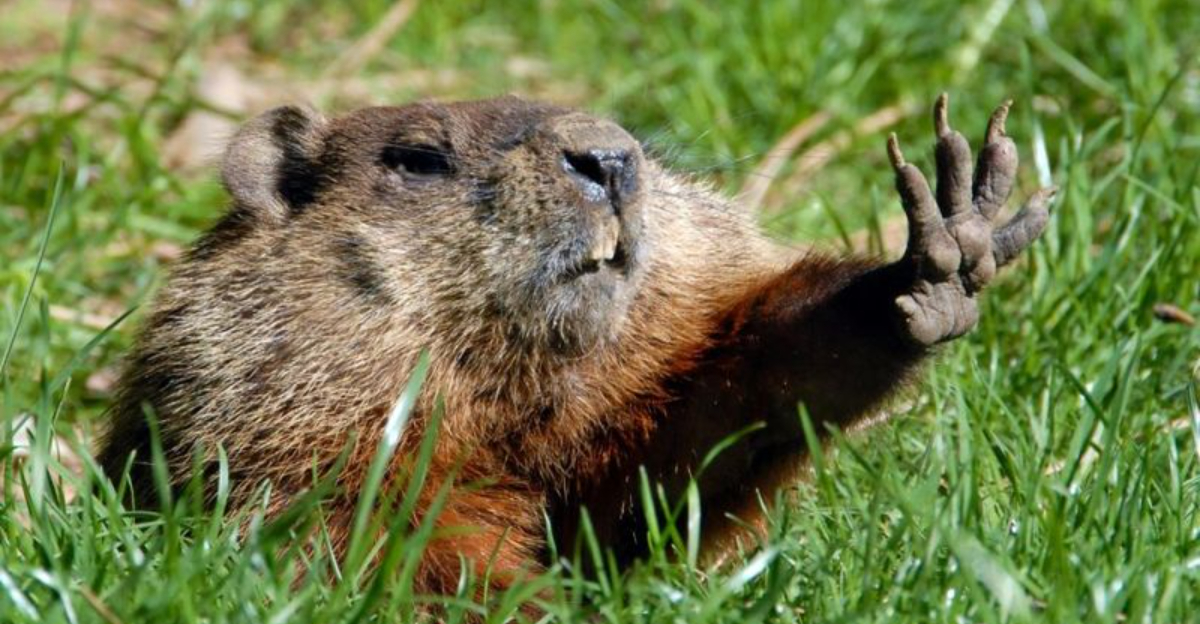
Groundhogs might look cute, but these hungry critters can devastate your garden in just a few hours. These voracious vegetarians can munch through your prized vegetables and flowers, leaving destruction in their wake.
Luckily, Mother Nature offers a simple solution – certain plants that groundhogs absolutely hate.
By strategically adding these groundhog-repelling plants to your landscape, you can protect your garden naturally without harmful chemicals.
1. Fragrant Lavender Borders

Lavender’s intense fragrance makes groundhogs turn their noses up and scurry away. The strong essential oils that give lavender its lovely scent overwhelm a groundhog’s sensitive nose, creating an invisible barrier they rarely cross.
Plant lavender borders around vegetable gardens or along property edges where groundhogs typically enter. This hardy perennial thrives in sunny spots with well-drained soil and requires little maintenance once established.
Beyond repelling groundhogs, you’ll enjoy beautiful purple blooms that attract beneficial pollinators and provide fragrant flowers for cutting and drying.
2. Aromatic Garlic Plants
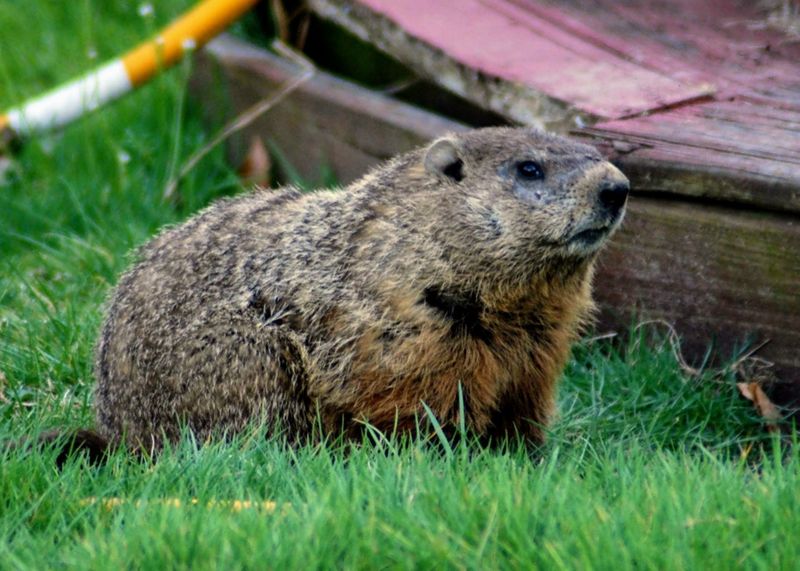
Garlic’s powerful sulfur compounds send groundhogs running in the opposite direction. The strong smell interferes with their ability to detect predators, making them feel vulnerable and unsafe in your garden.
Plant garlic cloves in fall for early spring protection, or intersperse young garlic plants throughout your garden beds during growing season. The tall, slender stalks with pretty white flower clusters blend well with ornamental plantings.
You’ll gain a dual benefit – groundhog protection plus a delicious harvest of fresh garlic bulbs for your kitchen adventures.
3. Prickly Globe Thistle
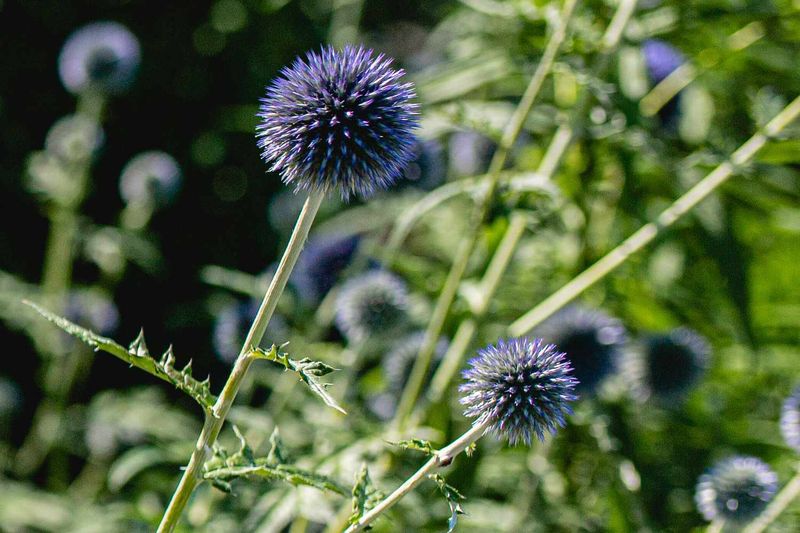
Globe thistle creates a spiky defense system groundhogs won’t dare approach. Their prickly stems and leaves act as natural barbed wire, while their striking blue spherical flowers add architectural interest to your landscape.
Groundhogs quickly learn to avoid these plants after a single uncomfortable encounter. Position globe thistles strategically around garden perimeters or intersperse them among vulnerable plants.
As a bonus, these drought-tolerant perennials require minimal care and provide food for bees and butterflies. The dried seed heads also make interesting additions to flower arrangements.
4. Pungent Allium Clusters

Alliums combine showstopping beauty with powerful groundhog-repelling properties. From giant purple globes to delicate white clusters, these ornamental onion relatives contain the same sulfur compounds that make groundhogs avoid garlic.
Plant allium bulbs in fall for spring and summer protection. Their architectural flower heads rise above lower plantings on strong stems, creating dramatic vertical elements in your landscape design.
Even after blooming, the dried seed heads continue providing visual interest while the underground bulbs maintain their repellent properties. Bonus: deer and rabbits also tend to avoid these gorgeous flowers!
5. Majestic Castor Bean Plants
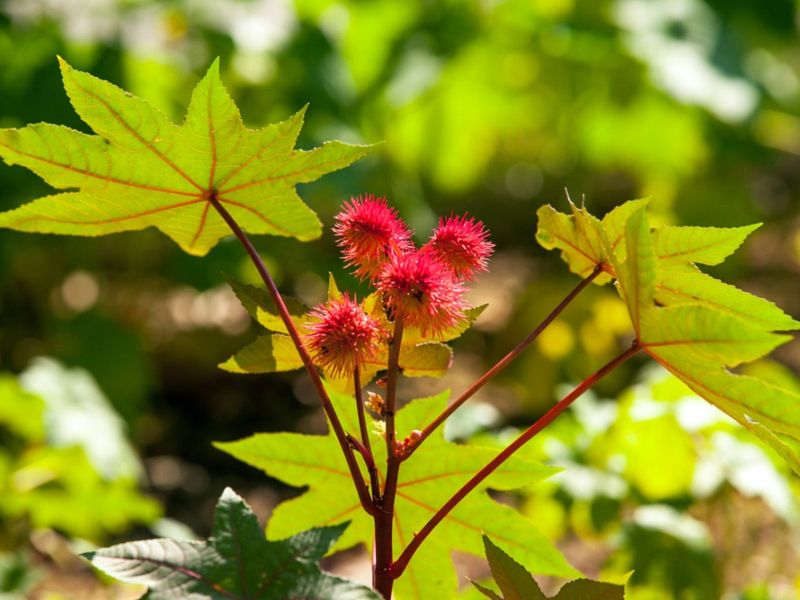
Castor bean plants create a tropical jungle vibe while keeping groundhogs at bay. Their massive star-shaped leaves and spiky red seed pods contain ricin, a compound groundhogs instinctively avoid due to its toxicity.
Growing up to 10 feet tall in a single season, these dramatic annuals cast shade that groundhogs dislike while creating privacy screens for your yard. Their burgundy stems and exotic appearance make striking focal points.
CAUTION: All parts of this plant are toxic to humans and pets if ingested, so place thoughtfully if you have children or curious animals.
6. Fuzzy Lamb’s Ear Patches
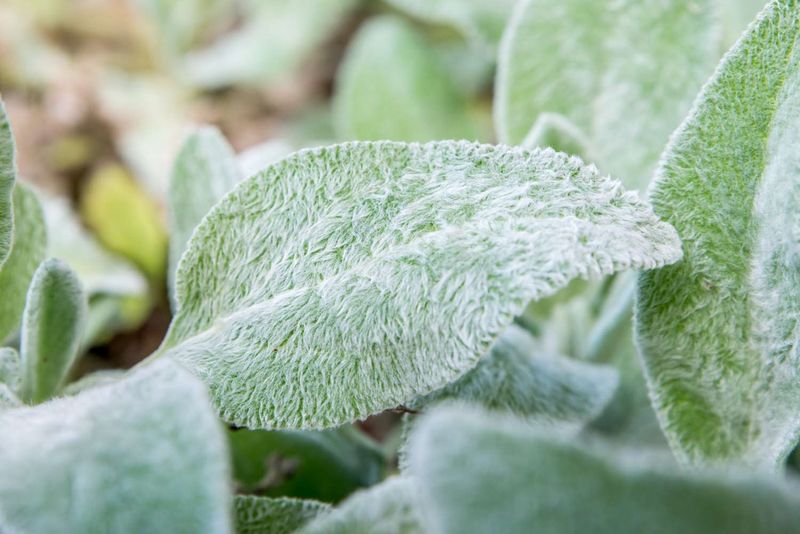
Lamb’s ear features soft, velvety leaves that feel pleasant to us but repel groundhogs with their fuzzy texture. These ground-hugging perennials spread into thick patches that groundhogs find uncomfortable to walk across or dig through.
The silvery-gray foliage creates beautiful contrast against darker green plants and thrives in poor soil conditions. In summer, tall purple flower spikes emerge, attracting beneficial pollinators to your garden.
Plant lamb’s ear along garden edges or pathways where groundhogs might enter. Their drought tolerance makes them virtually maintenance-free once established.
7. Minty Fresh Perimeters
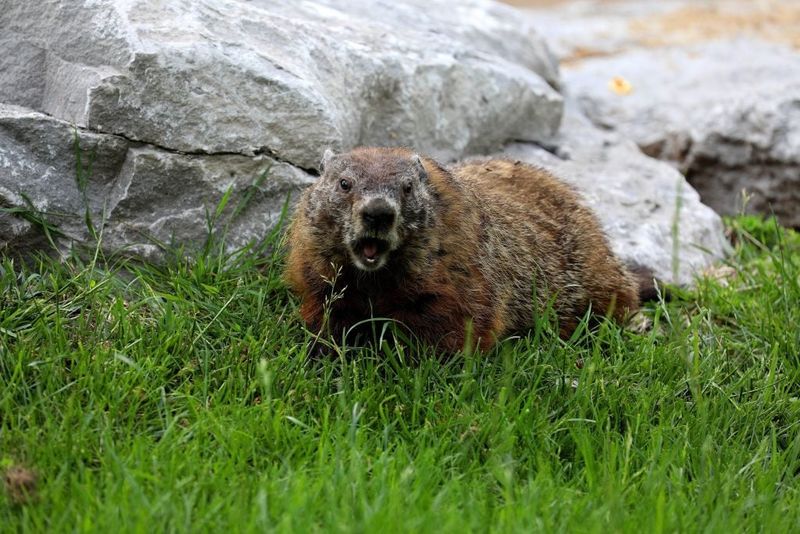
Mint creates a sensory overload that sends groundhogs packing. The strong menthol compounds overwhelm their sensitive noses and mask the scents of nearby edible plants they might otherwise target.
Grow mint in containers sunk into the ground around garden perimeters to prevent its invasive spreading. Peppermint and spearmint varieties offer the strongest groundhog-repelling properties while providing leaves for your teas and cooking.
Regularly harvest or crush some leaves to release more of the aromatic oils. The bonus? You’ll enjoy the refreshing scent while working in your garden, and mint helps deter mosquitoes too!
8. Vibrant Marigold Boundaries

Marigolds emit a distinctive scent from their roots and foliage that groundhogs find particularly offensive. Their bright orange and yellow blooms might look cheerful to us, but groundhogs perceive them as warning signals to stay away.
Create protective borders around vegetable gardens by planting marigolds every 2-3 feet. These easy-growing annuals thrive in full sun and keep producing their pungent compounds all season long.
French marigold varieties work best for groundhog control, with the added benefit of deterring nematodes and other garden pests that might damage your prized plants.
9. Spicy Hot Peppers
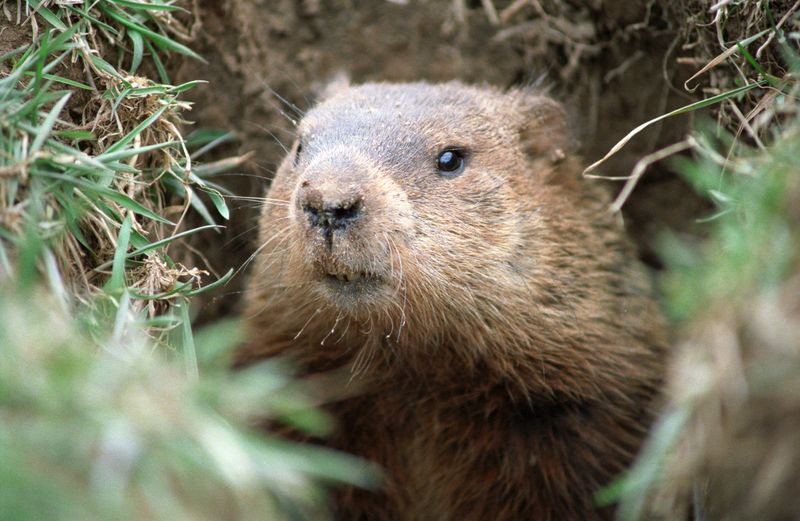
Hot peppers contain capsaicin that creates a burning sensation groundhogs actively avoid. The spicy compound irritates their sensitive mouths and noses, teaching them quickly that your garden is not a friendly dining spot.
Intersperse hot pepper plants throughout your vegetable garden or create a spicy boundary around particularly vulnerable plants. Varieties like cayenne, jalapeño, and habanero all work effectively while providing you with a harvest of spicy peppers.
For enhanced protection, spray a homemade pepper solution on nearby plants – simply blend peppers with water and strain before applying.
10. Towering Cleome Barriers
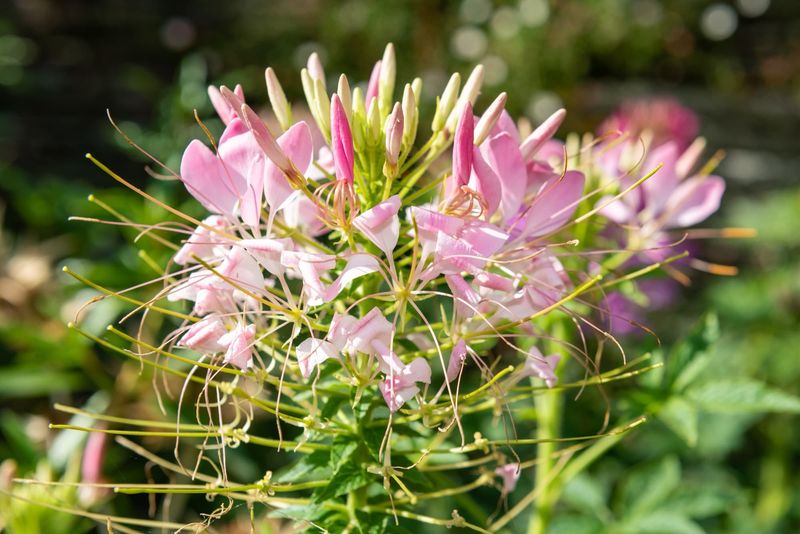
Cleome, also called spider flower, develops thorny stems that groundhogs avoid brushing against. These dramatic annuals grow quickly to 4-5 feet tall, creating physical and visual barriers around garden areas.
The spiky seed pods and sticky stems make cleome particularly effective at deterring groundhogs from entering your yard. Their unique pink, white, or purple flowers add vertical interest from midsummer through fall.
Plant cleome seeds directly in the garden after frost danger passes. They self-seed readily, providing years of groundhog protection with minimal effort while attracting beneficial hummingbirds and butterflies.
11. Regal Crown Imperial Lilies
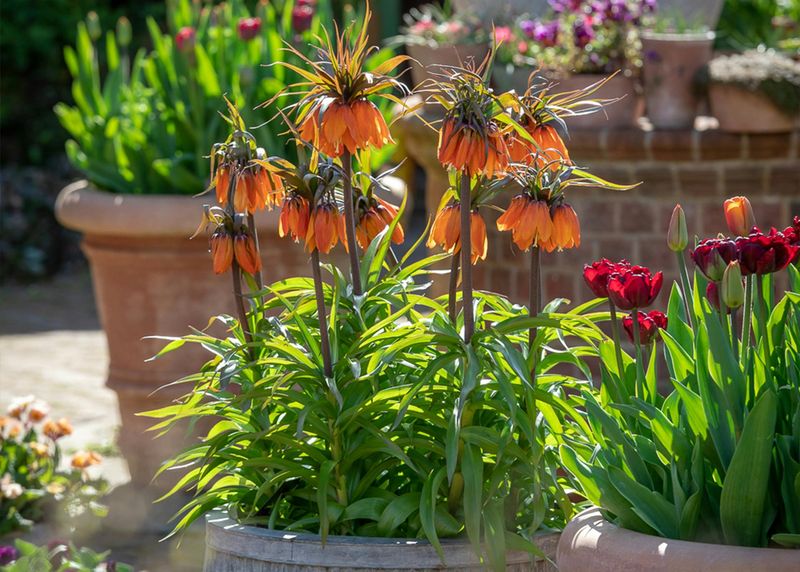
Crown imperial lilies emit a fox-like scent that triggers groundhogs’ instinctual fear of predators. These stunning spring-flowering bulbs grow 3-4 feet tall with clusters of bell-shaped blooms topped by tufts of green leaves resembling crowns.
Plant these royal-looking flowers near garden entrances or around the perimeter of vegetable patches. Their distinctive skunk-like odor is barely noticeable to humans from a distance but sends groundhogs scrambling for safety.
The dramatic orange, yellow, or red flowers make bold statements in spring gardens while their underground bulbs continue releasing deterrent compounds throughout the growing season.
12. Silvery Wormwood Clusters
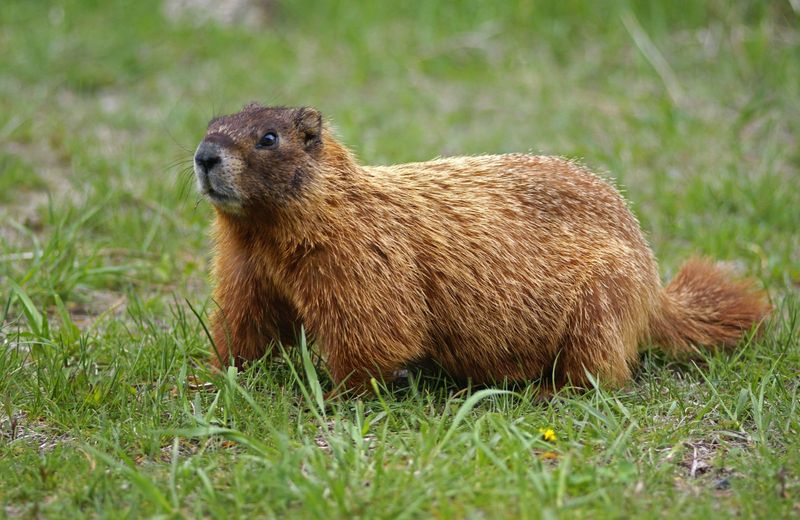
Wormwood contains intensely bitter compounds that groundhogs find utterly repulsive. Its finely cut, silvery foliage adds elegant texture to gardens while silently standing guard against unwanted visitors.
This drought-tolerant perennial thrives in poor soil and hot conditions where other plants struggle. Plant wormwood in groups of three to create effective groundhog barriers, particularly in sunny, dry areas.
Beyond groundhog control, the aromatic foliage repels many insects and can be harvested for natural moth-repellent sachets. The plant’s feathery appearance creates a beautiful contrast against broader-leaved garden plants.






